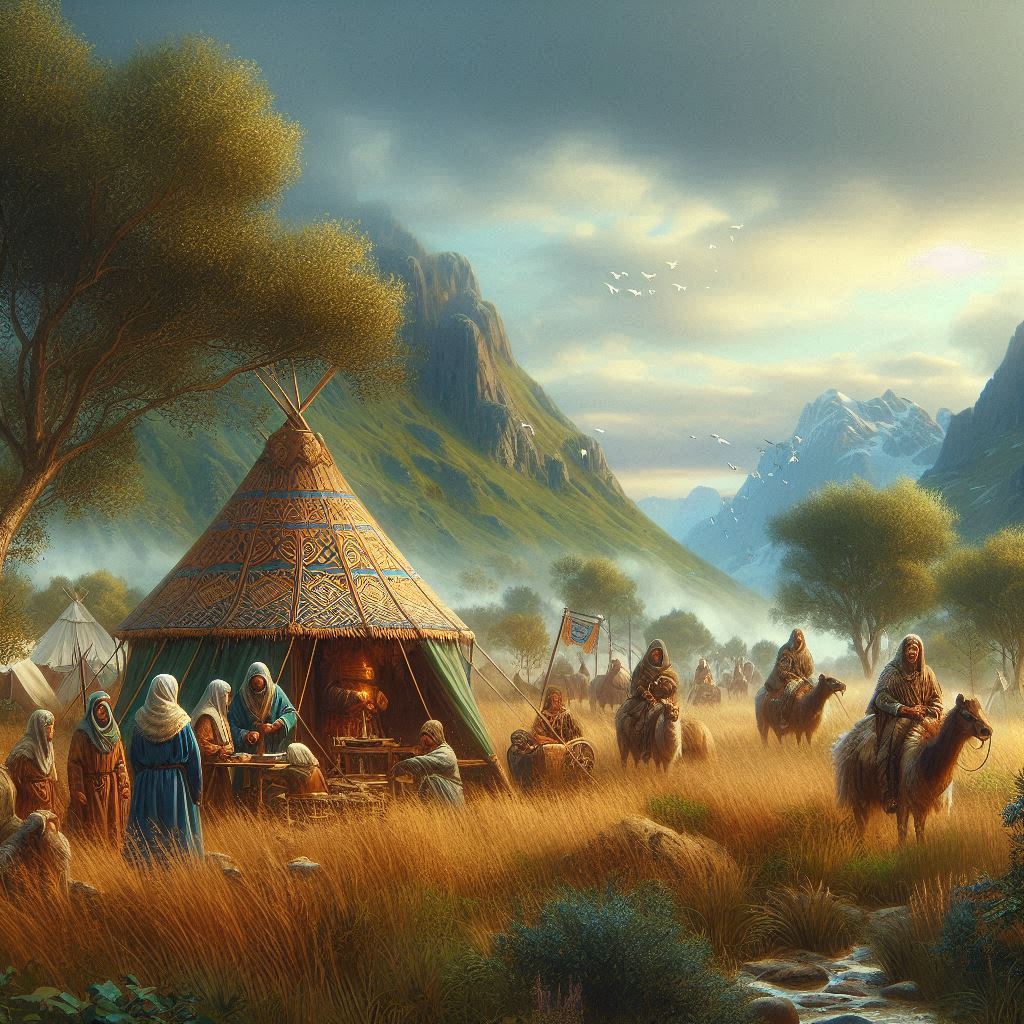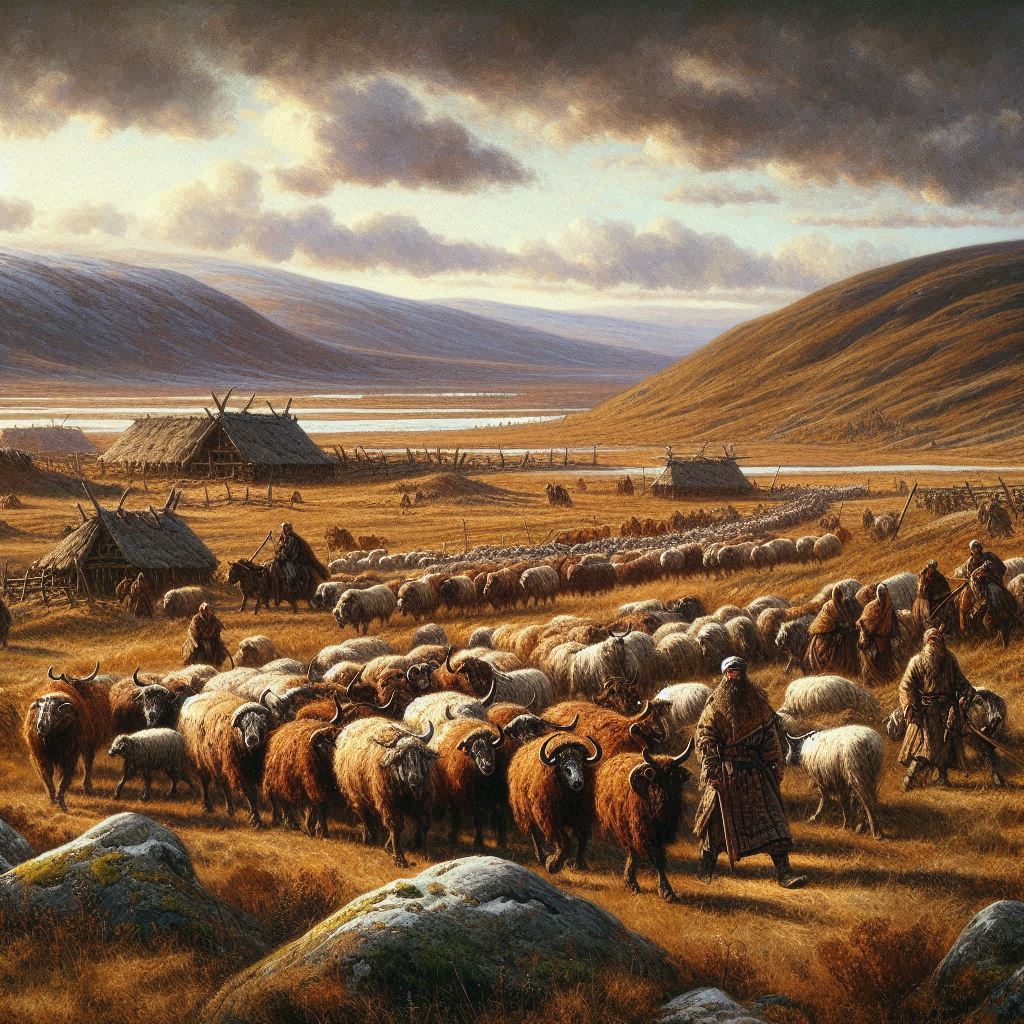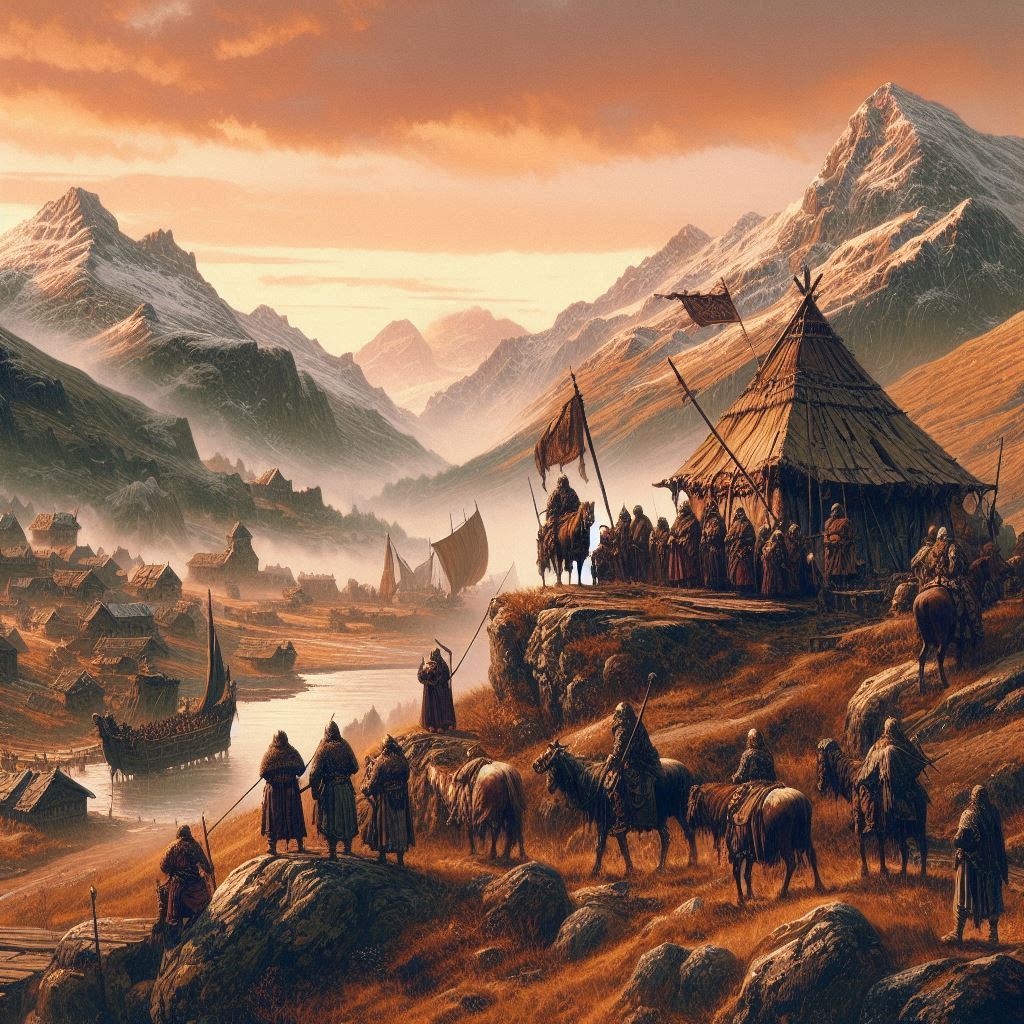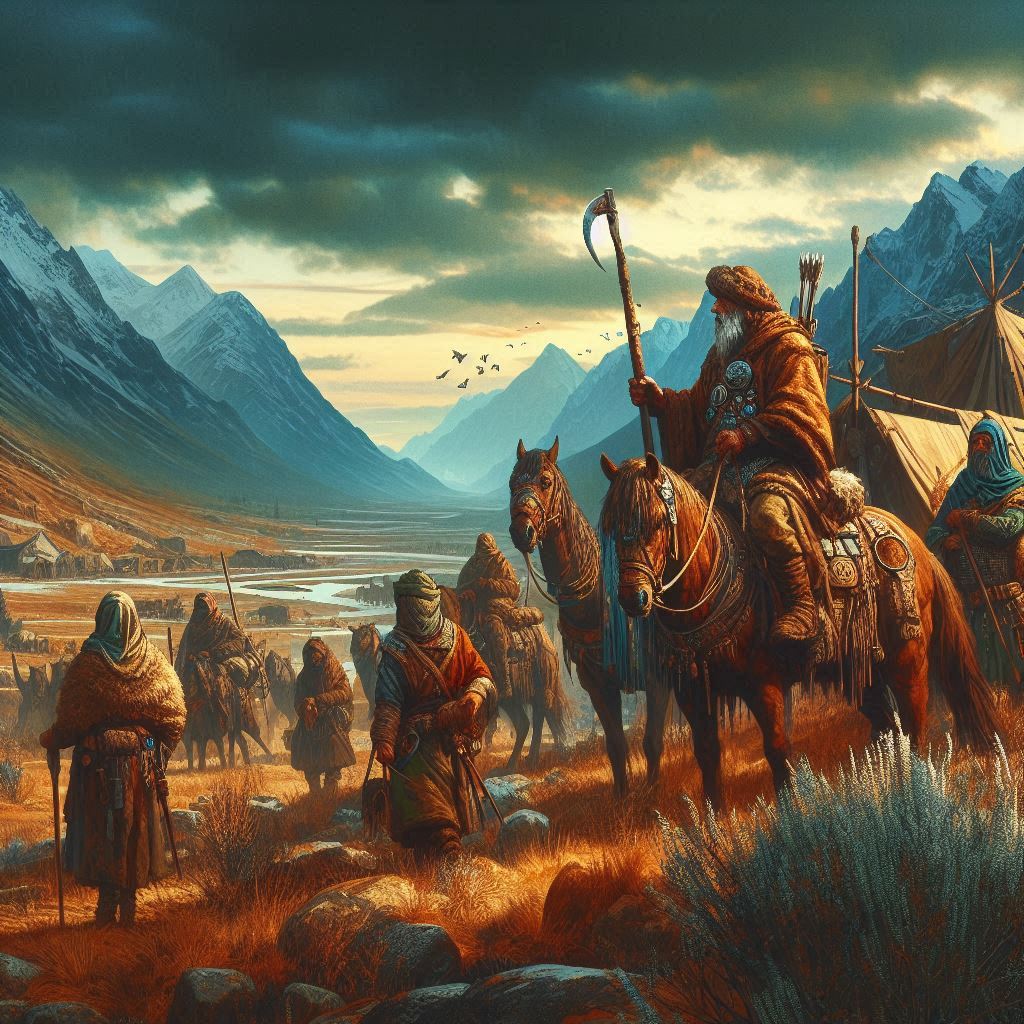Nomad culture
NOMAD SUBCULTURES
GENERAL SKILLS- Animal Handling
- Bribery
- Butchery
- Cookery
- Direction Sense
- Distance Running
- Diving
- Driving
- Fletching
- Foraging
- Herb Lore
- Herding
- Hide Item
- Hostile Environment
- Hunting
- Leatherworking
- Navigation
- Public Speaking
- Riding
- Rope Mastery
- Tracking
- Trading
- Loading
- Weather-Watching
Legend
“Like a gust of wild wind, they arrive with splendid pastries but are soon gone again.”
Description

Nomadic cultures are characterised by a strong sense of freedom, independence, and resilience. They are experts in survival and adaptation, living in harmony with the natural world. While nomads are known for their mobility, they engage in trade and barter with settlements along their routes. The resources or goods they possess are highly sought after, and trade interactions shape their relationships. Nomadic cultures often have unique festivals and celebrations tied to the changing of seasons, important events like successful raids or hunts, or celestial phenomena. These gatherings are opportunities for various tribes to come together, exchange stories, arrange marriages, and showcase their skills.
Lifestyle: Nomadic groups often speak related dialects, but distinct languages with their own idioms, proverbs, and phrases exist among them, reflecting their way of life and beliefs. Rituals and ceremonies are performed during critical moments of a nomad’s life, such as birth, coming of age, marriage, and death. These rituals often involve blessings from nature spirits, ancestral deities, or unique tests of courage and endurance.
Diet: Nomadic cultures focus on portability and preservation. Their diet consists mainly of dried meats, cheeses, grains, and hardy vegetables that can withstand long journeys. They are also skilled in foraging and hunting, supplementing their diet with fresh game and wild plants when available. Their food is often simple but energy-dense.
Traditions and Stories: Nomadic cultures rely heavily on oral traditions, myths, and storytelling to pass down their history and values. Elaborate epic tales and great bardic performances are integral to their culture, serving as a way to unite the tribes and preserve their heritage.
Marriage Pattern: Men can take more than one wife, but it is rare since they must pay a bride price. Marriage alliances are often formed to strengthen ties between tribes.
Religion: Superstitious rituals concerning nature spirits and heroic ancestral deities are prevalent. Magic and mysticism play large roles, with shamans and mana manipulators living among them, making magic an integral part of life.
- Religious system: Polytheism as the belief in multiple gods associated with the sky, sun, and moon in a complex hierarchy.
- God-Mortal Interaction: Deities associated with the sky, sun, and moon birthed belief in the guidance of ancestors, especially those who led successful migrations.
- Rituals: ceremonies to ensure successful hunts, migrations, and protection from storms.
- Impact on Society: A strong emphasis on family and community, with elders holding significant respect. Religion reinforces the importance of adaptability and resilience.
Skjald Sejrik
Craftsmanship: Nomadic cultures produce exquisite crafts out of necessity and tradition. Their craftsmanship often involves organic or softer materials, such as intricate leatherwork, bone carving, or light metalworking. These crafts have spiritual significance and are highly sought after as trade items.
Clothing & Decoration: Nomads wear colourful linen cloaks, woollen tunics, leather pants, and lower leg protectors. They also wear fur hats with ear flaps or fur-covered pot helms. Some groups paint their upper bodies and faces for ceremonies and battles.
Armor: Nomads use up to medium armour, including shields and helms.
Weapons: Their weapons include the bola, dagger, javelin, scimitar, short bow, short sword, sling, and long sword.
Special Items: Nomad crafts involve shapely creations from bone, leather, iron, and bronze. These items are both functional and decorative, often imbued with cultural and spiritual significance.
Skjald El Mary
Time: Nomadic tribes follow herd movements, celestial occurrences, migration routes, and seasonal resource availability.
Accomplishment and achievement: The tribe’s ability to navigate wide terrain and thrive in the environment is crucial for success. Successful trips, adaptation to new surroundings, successful raids, individual survival and resource acquisition, and strong kinship relationships are all important.
Authority Interaction: .Display respect for elders, war chiefs, experienced pathfinders, and those who secure group survival. Leaders and wise elders, chosen for their capacity to guide and safeguard the tribe, exercise authority while emphasising adaptability.
Fears & Inabilities: Nomads fear darkness and thunderstorms, which are seen as omens or threats.
Mien: Culture strongly shapes demeanour, with limited room for individual expression. Nomads are typically cold, determined, and brave to the point of foolhardiness. They relish death or are at least unconcerned with death in battle.
Mannerism: Constant movement fosters adaptability, resilience, and a pragmatic demeanour.
Prejudices: Nomads have little regard for anyone except their own people. They hate urbans and dislike grasslanders, desert dwellers, and subterraneans.
Skjald Ulrich
General Resistance: Nomads’ constant movement and exposure to various environments have built up their resilience against diseases, resulting in a strong immune system.
Disease Resistance: Moderate. Their mobile lifestyle limits exposure to diseases in any one area.
Poison Resistance: Moderate. Their adaptability to various environments enhances their ability to deal with local poisons.
Remedies: Nomads have extensive knowledge of local plants with medicinal properties, relying on their surroundings for healing.
Skjald Valgrif
History

Nomad cultures have a rich oral tradition, passing down stories of migrations, battles, and legendary ancestors. They have a history of conflict with settled civilisations and rival nomadic tribes. Nomadic tribes might also have tales of ancient alliances and legendary heroes who forged paths and secured their survival in hostile environments.
Skjald Kazumix
Cartography

Nomads live in mobile camps on plains and steppes, moving their camps using great wagons. They herd horses and cattle and are all warriors. Nomads interact with settled societies, sometimes settling temporarily. They have peaceful trading relationships but occasionally clash over resources or territory, especially with urbans and grasslanders. Nomads are masters of survival in diverse environments, adapting their lifestyle and practices to different landscapes such as deserts, grasslands, and mountain ranges. This results in variations of clothing, tools, and even social structures.
Skjald Ulrich
Organisation

Nomadic societies are typically egalitarian, with leadership based on merit or wisdom. Kinship and loyalty are paramount, and decisions are often made collectively. Nomadic societies often have strong clan structures and hierarchical leadership. The dynamics between different clans, rivalries, alliances, and leadership transitions often lead to political intrigue and power struggles within the nomadic confederations.
Skjald Sejrik
Special

Nomad cultures possess exceptional horsemanship and archery skills. They have a deep knowledge of the land, including weather patterns and wildlife. They also have a strong spiritual connection to the natural world, viewing it as both a source of sustenance and a realm of powerful spirits.
Skjald Valgrif
Last Updated on 2024-10-20 by IoM-Christian
